
NETV GOLD
Netv Gold web sitesine hoş geldiniz. Netv Gold, akıllı telefonlar için Türkiye’nin 1 numaralı eğlence uygulamasıdır. Filmleri, TV şovlarını, canlı Türk TV kanallarını ve diğer eğlence içeriklerini izlemek için en iyi çevrimiçi deneyim. Dünyanın dört bir yanından binlerce içeriğe HD, reklamsız ve sınırsız İçerik ile erişin. En iyi sporları, filmleri ve web dizilerini izleyin, netv gold Apk indir web sitemizden ücretsiz ve tüm özelliklerin tadını çıkarın
v9.00
Netv Gold Apk Son Sürüm İndir Android için kullanılabilir. Ücretsiz İndirme ile Netv Gold Apk Premium Unlocked’ın keyfini çıkarabilirsiniz. Bugün bu Uygulama hakkında her şeyi ve Android’e sorunsuz bir şekilde nasıl indirip yükleyebileceğinizi ele alacağız, bu yüzden lütfen sonuna kadar bizimle kalın.
Bu stres dolu yaşamda herkes, işlerine geri dönmek ve daha verimli olmak için güç ve enerji kazanmalarına yardımcı olacak biraz ‘ben’ zamanı arıyor. Bu nedenle çoğu insan boş zamanlarını geçirmek ve rahatlamak için TV’lerinde veya akıllı telefonlarında bazı eğlence içeriklerini izlemeyi tercih ediyor. Bu nedenle bugün Android kullanıcıları için harika bir eğlence uygulaması Netv Gold ile geldik. Bu uygulama ile canlı TV kanalları, filmler, diziler, spor karşılaşmaları ve çok daha fazlasını içeren birçok eğlenceli içeriği yayınlayabilirsiniz.
Ayrıca Bakınız: 20 Film izleme uygulaması
NeTV Gold Hakkında
İnternet Netflix, Hotstar, HBO ve çok daha fazlası gibi birçok çevrimiçi yayın uygulamasıyla dolu. Ancak bu uygulamalarla ilgili temel sorun, hepsinin premium uygulamalar olması ve içeriklerini izlemek için aylık abonelik gerektirmesidir ki bu oldukça zor bir deneyimdir. Dolayısıyla, tek bir kuruş harcamadan size sınırsız eğlence sunan ücretsiz bir alternatif arıyorsanız, NETV Gold sizin için en iyi seçenek olabilir. Bu uygulama, kullanıcılara ücretsiz olarak premium bir deneyim sunan devasa harika özelliklerle birlikte gelir.
NeTv Gold, müzik, video, film, dizi, TV şovu vb. gibi eğlence içeriğine özgürce erişmek için en iyi kaynaktır. Ayrıca, uygulama bu içeriği farklı ülkelerden ve popüler endüstrilerden getiriyor. Uluslararası içeriğe göz atmak için bir VPN veya diğer üçüncü taraf siteleri denemek zorunda değilsiniz. Uygulama en iyi TV şovlarını, dramaları, dizileri, Filmleri ve müzikleri ücretsiz olarak sağlar. Ayrıca, herhangi bir kayıt veya doğrulama yapmaktan rahatsız olmazsınız.
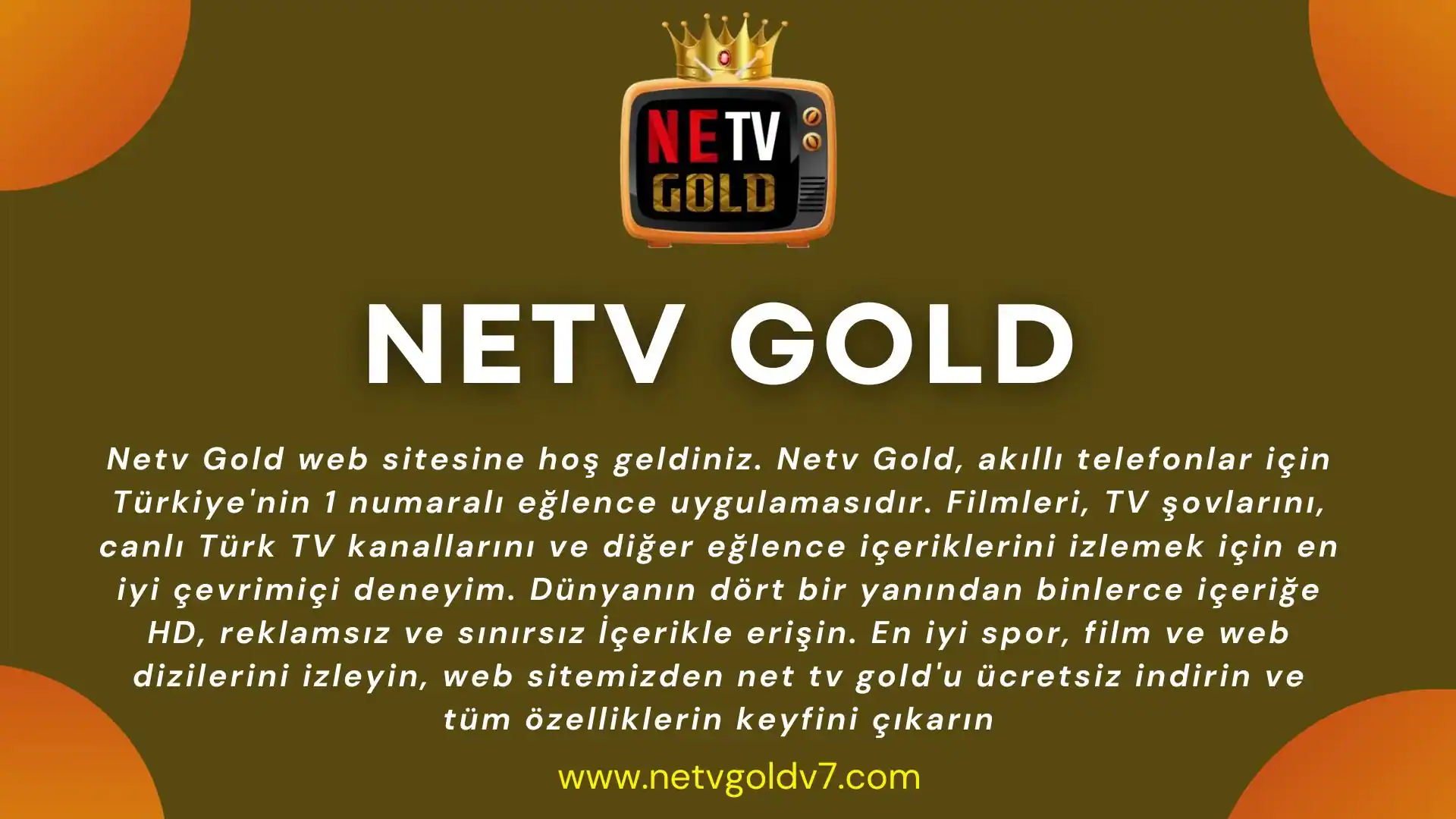
Sadece bu değil, NeTv Gold, Kore, Asya, Çin ve özellikle Türk gibi farklı ülkelerden çok çeşitli eğlence şovlarına ücretsiz erişim sağlar. Uygulama özellikle Türk şovlarını dünyanın dört bir yanındaki herkes için kullanılabilir hale getirmeye odaklanıyor. Türk ve Kore TV şovları son yıllarda büyük popülerlik kazanmalı ve Hindistan, Bangladeş, Pakistan gibi ülkeler bu şovları çok iyi karşıladı.
Netv Gold V9, dünyanın neresinde olursanız olun tüm favori TV kanallarınızı izlemenizi sağlayan bir video akış platformudur. Platform ayrıca gişe rekorları kıran filmler ve web dizileri de içeriyor. Bu uygulama, uygulamayı her açtığınızda eğlenmek istiyorsanız sahip olabileceğiniz en iyi seçeneklerden biridir. En son haberleri, trend makaraları, spor karşılaşmalarını ve çok daha fazlasını yalnızca Netv Gold uygulamasında izleyin. Uygulama, açıklanmayan nedenlerden dolayı Google Play Store’da mevcut değildir, ancak indirme düğmesine basarak bu siteden kolayca edinebilirsiniz.
Netv Gold Özellikler
NeTV Gold, aralarında uygulamanın bazı önemli noktalarını burada tartıştığımız tonlarca heyecan verici özelliğe sahiptir.
TV Kanalları
Uygulama, yukarıda bahsettiğimiz gibi 200’den fazla TV kanalına sahiptir ve kanallar da farklı türlerden diğer birçok kanalı filtreledikten sonra eklenen seçici kanallardır. Uygulamayı ziyaret edin ve uygulamada her şeyi yararlı bulacağınıza bahse gireriz.
Ücretsiz platform
tüm şaşırtıcı şeyler ücretsiz. Ücretsiz hizmetler sağlayan başka birçok uygulama var, ancak bu uygulamayı kullanmaya başladığınızda dikkate değer bir fark göreceksiniz. Ultra akıcıdır ve sizi tüm gecikme sorunlarından kurtarır.
Web dizileri
Bu uygulama aracılığıyla tüm popüler web dizilerini izleyebileceksiniz. Uygulamayı açın ve arama çubuğuna gidin, anahtar kelimelerinizi yazın ve sihri görün. Sizi doğrudan aradığınız videoları görebileceğiniz sayfaya götürecektir.
Netv Gold Son Sürümün Temel Özellikleri
- İki yüzden fazla X-U Canlı Tv ağı
- Kanallar için aşağıdaki kategoriler oluşturulmuştur: Herkes, Çocuklar, Video Oyunları, Yüksek Çözünürlüklü Müzik ve Filmler
- En çok izlediğiniz televizyon kanallarının bir listesini oluşturun.
- 7 gün boyunca televizyon programlarınızı kaçırmayın.
- İstek üzerine video
- Radyo istasyonu en çok dinleyiciye sahiptir.
- Netv Gold APK’sının Temel Özellikleri
- Belirgin bir model yoktur.
- Üye olma zorunluluğu yoktur.
- Ücretsiz olarak indirin.
- Programı kurarken, aralarından seçim yapabileceğiniz çeşitli kart oyunları ve slot makinelerinden oluşan bir seçki verilecektir.
- Filmler için çok çeşitli alt türler vardır.
- Üçüncü taraf kaynakları kullanarak reklam yapmak yasaktır.
- Oyunun kullanıcı arayüzü mobil cihazlar için optimize edilmiştir.
Android için Netv Gold Apk nasıl indiri?
- APK’yı cihazınıza yüklemek çok kolay. Bilinmeyen kaynaklardan indirmeyi etkinleştirmek, yükleme işlemi ile aranızda duran tek şeydir.
- İndirme düğmesine tıkladıktan sonra, Netv Gold Mod APK’sına bir bağlantı üretilecek ve yaklaşık 20 saniye içinde size sunulacaktır.
- Bu yazılımı yüklemek için önce .apk dosyasını alın ve ardından favori indirme yöneticinizi kullanın.
- Sorun yaşarsanız, sahip olabileceğiniz eski sürümleri kaldırdıktan sonra Netv Gold Apk’nin en son sürümünü yüklemeyi deneyin.
- Netv Gold v8’i bir Android uygulaması (APK) olarak edinmek de mümkündür. Bu varyant, bazı yeni işlevler içerdiğinden ilk sürümden biraz farklıdır. Netv Gold Mod Apk ile yüksek çözünürlükte (HD) izleyebilir ve hatta içerik indirebilirsiniz.
Her zaman izlenecek yeni bir şeyler olmasının yanı sıra, Netv Gold APK sürekli olarak yeni materyallerle güncellenir. Uygulamanın sezgisel düzeni sayesinde herkes en sevdiği programları ve filmleri nereye giderse gitsin yanında götürebilir.
Çeşitli içeriklere sahip ücretsiz bir yayın hizmeti arıyorsanız, Netv Gold harika bir seçenektir. Hizmetin kullanımı kolaydır ve çeşitli cihazlarda kullanılabilir.
İşte Netv Gold’un bazı artıları ve eksileri:
Artıları
- TV şovları, filmler, spor ve diğer içeriklerin ücretsiz akışı
- Farklı ülkelerden ve dillerden içerik çeşitliliği
- Kayıt veya abonelik gerekmez
- Kullanımı kolay arayüz
- Çeşitli cihazlarda kullanılabilir
Eksiler
- Bazı içerikler coğrafi olarak kısıtlanmış olabilir
- Reklamlar görüntülenebilir
- Akış kalitesi değişiklik gösterebilir
Genel olarak, Netv Gold, kablo veya uydu TV için ödeme yapmak zorunda kalmadan en sevdikleri şovları ve filmleri izlemek isteyenler için harika bir seçenektir. Hizmet ücretsizdir, kullanımı kolaydır ve çeşitli cihazlarda kullanılabilir.
Ekran Görüntüleri
Netv Gold Uygulamasının bazı ekran görüntülerini burada bulabilirsiniz. bu sayede Netv gold hakkında bilgi edinebilir, Netv gold’nin nasıl göründüğünü ve neler içerdiğini öğrenebilirsiniz. Ayrıca bakınız Inat Box Pro Apk
Netv Gold APK İndir
Her şeyden önce, bunun yasal bir uygulama olduğunu bilmelisiniz, bu nedenle bu uygulamayı Google Play Store’da bulamayacaksınız. Yani elbette bu uygulamayı indirmek için bir web sitesi kullanmanız gerekiyor. Ancak bu uygulamayı herhangi bir web sitesinden indirmeden önce bir şeyi unutmayın, web sitesinin güvenilir olduğundan ve her türlü virüs vb. içermediğinden emin olun. Kullanıcılarımıza web sitemizden aldığınız dosyanın kesinlikle güvenli olduğunu garanti ediyoruz. Dosyayı yüklemeden önce dikkatlice kontrol ediyoruz ve ardından NetvGoldV7.com yüklüyoruz.
| uygulama adı | NeTV Gold |
| Dosya Boyutu | 15.9 MB |
| Geliştirici | NETV GOLD |
| Platfrom | Android |
| Kategori | Eğlence |
| Versiyon | V.9 |
| Güncellenmiş | 11 Saat Önce |
Sıkça Sorulan Sorular (SSS)
Apk Dosyasının Mod Versiyonunu Sağlıyor muyuz?
Hayır, uygulamanın resmi bir operasyonel versiyonunu sağlıyoruz. İndirmesi ve yüklemesi ücretsiz olarak kabul edilir.
Netv Gold vAPK iPhone’uma indirebilir miyim?
Hayır, uygulama yalnızca Android cihazlara indirilebilir, çünkü bir iOS cihazı uygulamanın formatını desteklemez. Uygulamayı herhangi bir sorunla karşılaşmadan cep telefonları, tabletler vb. gibi herhangi bir android cihaza yüklemekten çekinmeyin.
Netv Gold v APK’sını indirmek güvenli midir?
Evet, uygulamanın yüklenmesi tamamen güvenlidir. Uygulamanın geliştiricileri, hata düzeltmeleri de dahil olmak üzere iyileştirmeler ve kullanıcıların karşılaştığı olağan sorunları giderdi. Bu uygulamayı yükleyin ve cihazınızın herhangi bir virüs kapması konusunda endişelenmeyin.
Apk dosyası bir android cihaza nasıl indirilir?
İşlem oldukça kolay ve sorunsuzdur. Sadece indirme düğmesine tıklayın ve bu uygulamayı cihazınıza indirin.
Provide Apk IOS ve PC Bilgisayarlarla Uyumlu mu?
Bu tür uygulamaları emülatörler kullanarak IOS ve PC Bilgisayarlarda çalıştırmak mümkün olsa da.
Bu Başvuru İçin Kayıt Gerekli mi?
Premium içeriğe erişmek için kayıt veya abonelik gerekmez.
Sonuç
Son olarak, bu uygulama yeni içeriklerle günlük olarak güncellendiği için en sevdiğiniz TV şovunun veya dizinin ve gelecek filmlerin tek bir bölümünü bile kaçırmayacaksınız. Öyleyse, Netv Gold’yi şimdi indirin. Netv Gold videolar, TV kanalları, filmler, sezonlar ve çok daha fazlası gibi sınırsız eğlenceli seçeneklerle birlikte gelir. Gecikme sorunları hakkında endişelenmenize gerek kalmadan HD kalitesinde ücretsiz olarak istediğiniz kadar izleyebilirsiniz. Güncel olayları ve her şeyi yakalamakta sorun yaşıyorsanız, telefonunuzda bu uygulamaya ihtiyacınız var,
Feragatname
Feragatname: Bu yalnızca tanıtım amaçlı bir web sitesidir, Buraya yerleştirilen tüm dosyalar yalnızca tanıtım amaçlıdır. Bu sitede bulunan tüm dosyalar, web üzerindeki çeşitli kaynaklardan toplanmıştır ve bunların “kamu malı” olduğuna inanılmaktadır. İndirmelerimizle ilgili hâlâ bir sorununuz varsa veya bir Telif Hakkı Hak Talebiniz varsa, sorununuzu aşağıdaki formda göndermekten çekinmeyin; 24 Saat içinde harekete geçeceğiz. Daha fazla bilgi için Bize Ulaşın.
DMCA: NetvGoldv7.com 17 USC * 512 ve Dijital Binyıl Telif Hakkı Yasası (DMCA) ile uyumludur. Herhangi bir ihlal bildirimine yanıt vermek ve uygun önlemleri almak politikamızdır. Telif hakkıyla korunan materyaliniz sitede yayınlanmışsa ve kaldırılmasını istiyorsanız, bizimle iletişime geçin.
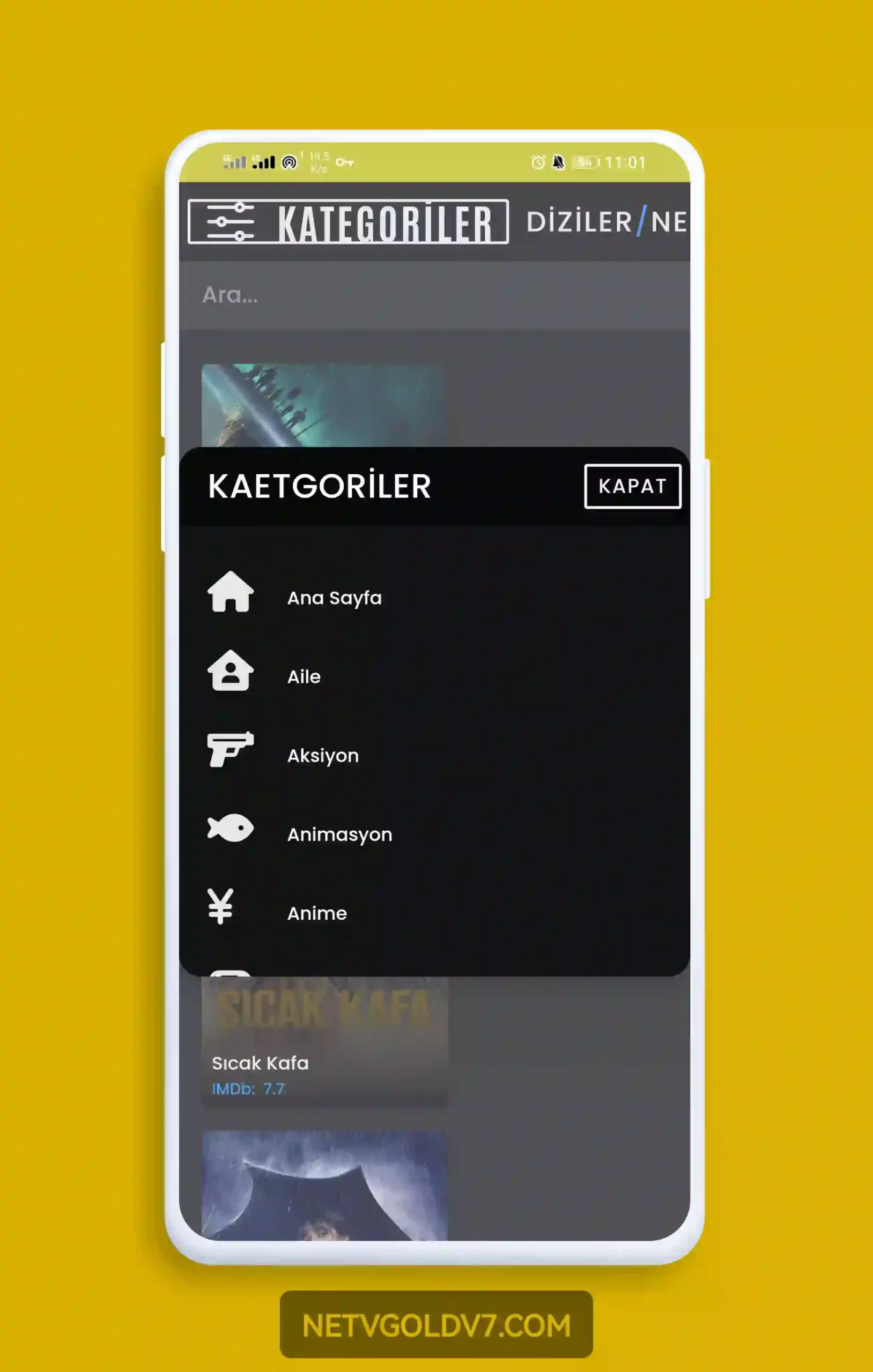
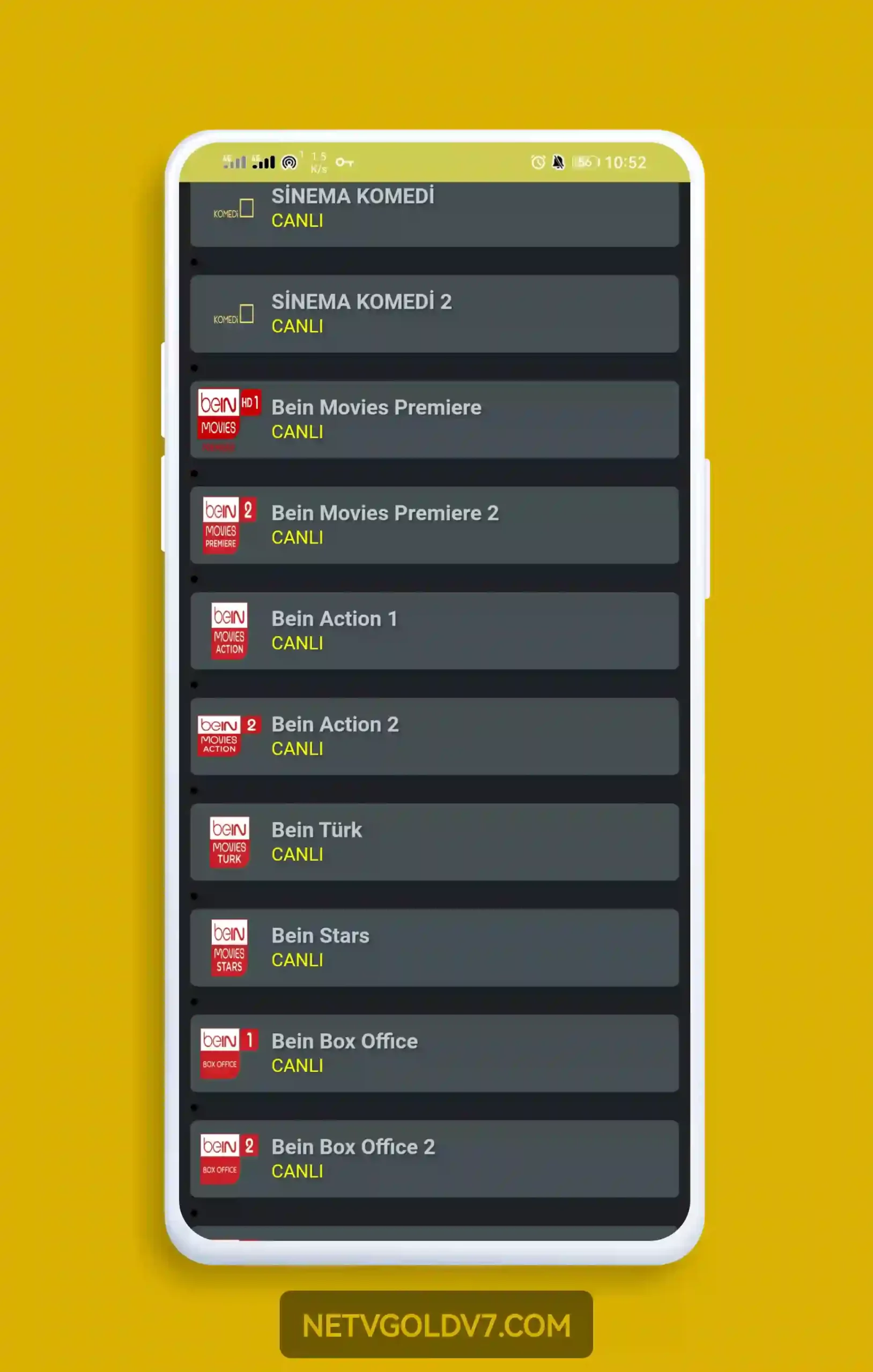
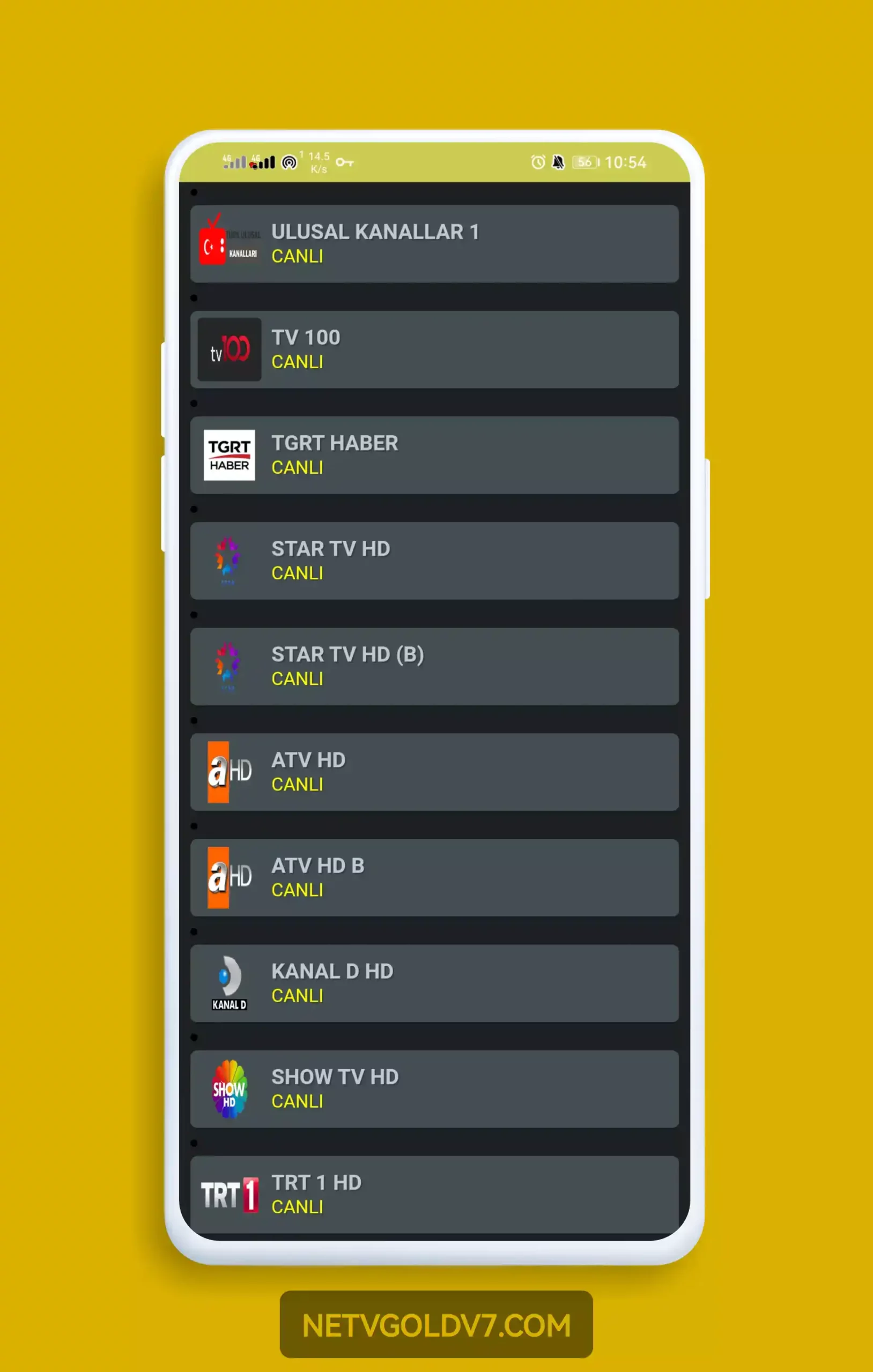


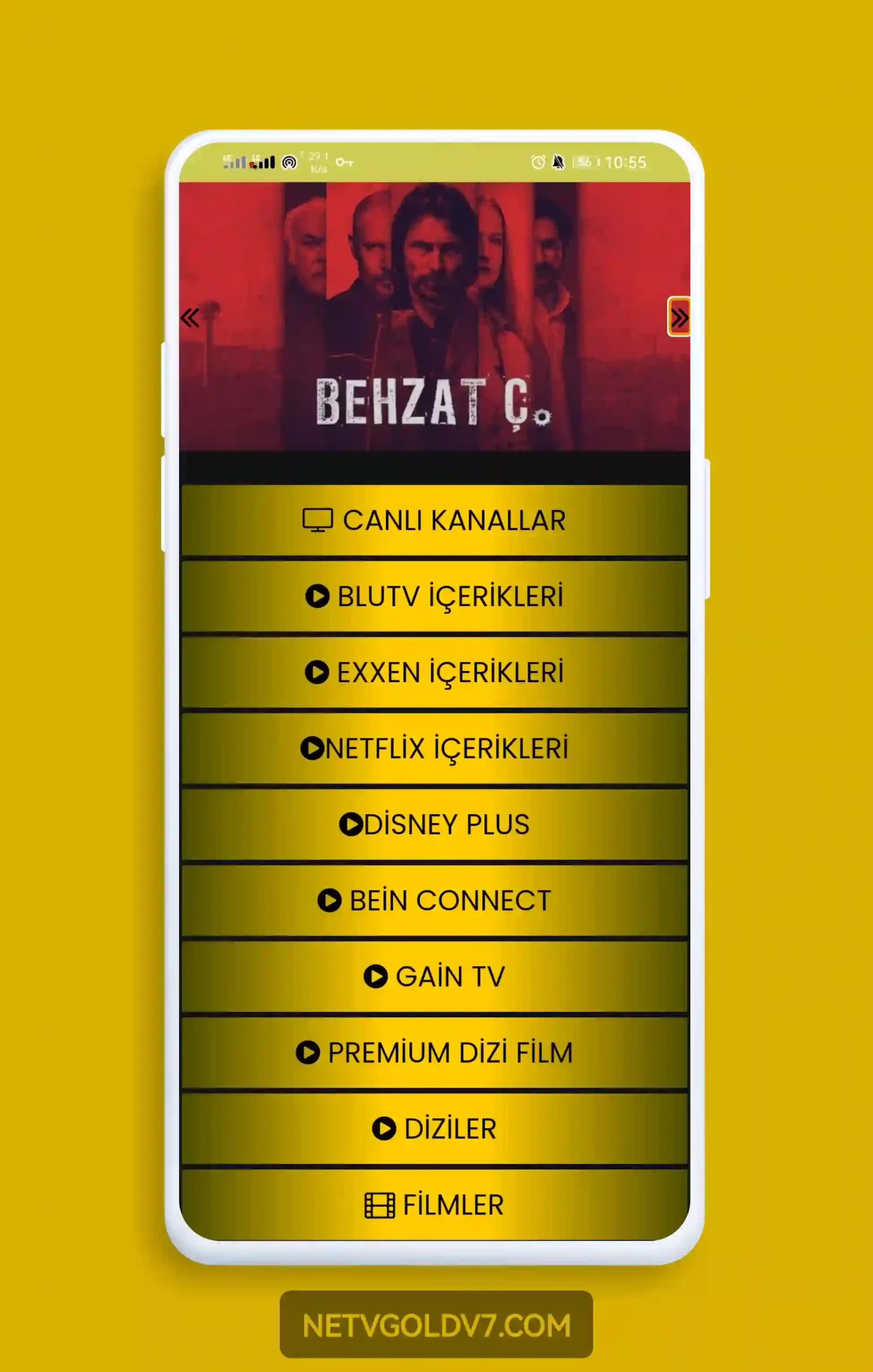
Orijinal apk’yi paylaştığınız için teşekkür ederiz
Uygulamanızda hiçbir içerik çalışmıyor! İçi boş tencerenin bu sofrada yer yok…
Uygulamanın güncellendiğini şimdi kontrol edin
Seniniçinbirneden
Öneri Vermek İstiyorum.
Dünyada 256 Tane Ülke Var. Bu Ülkelerin Televizyon Kanallarını Bir Uygulama Üzerinde Toplamasını Yüklenmesine Talepte Bulunmak İstiyorum.Teşekkürler. WhatsApp: 05422013467
Öneriniz not edildi
Uygulamayı android TV ye yüklediğimde uygulamalarda görünmüyor görmenin bir yolu varmıdır.
FileManager yükle içerisinde gözükür
Mccoy Douglas
Merhaba bu uygulama TV box içinde yapabilir mısınız
Ben ne diyim simdi
Jazmine Atkinson
vavoo tv yi tvbox ta kullanamıyoruz arama butonun da takılı kalıyor arama butonu kaldırılsa tv box için ayarlansa daha güzel olacak
Bu, yeni bir güncellemede düzeltilecektir.
Vavoo daki menüde kanalların seçimi hangisinde olduğunu görünmüyor
Kolay gelsin the wheel of time dizisinde dil ingilizce ama alt yazida bir ingilizce turkce duplaj yada alt yazisi turkce olarak yuklesemiz cok guzel olacak
Yeni güncellemede eklemeye çalışacağım.
Açılır açılmaz kapanıyor.
Çok yakında hatayı düzeltecek yeni bir güncelleme gelecek
Netflix blue TV bugüne kadar açılıyordu bugün açılmıyor
Merhaba bazı içeriklere giremiyorum extra kısmındaki içerikler.
TV Box için, uygulamaya destek gelecek mi. TV box için kurulduğun da yüklü uygulamaları içerisinde görülmüyor, kullanırken zorluk yaşıyoruz. Bizi diğer uyumalara yönetmeyin box için destek bir an önce gelsin.
selamün aleyküm bilgisayarda açılıyormu ben denedim olmadı ama
1 hafta oldu uğraşıyorum indiremedim
Kurtlar vadisi ne zaman gelir 2 yıldır bekliyorum artık gelsin internet üzerinden izlemekten bıktım bu uygulama çok güzel ama büyük bir eksik bu lütfen dikkate alın
Çok teşekkürler sesimi duyduğunuz için birde Kurtlar vadisi pusu gelse tadından yenmez çok teşekkürler
+18 yetişkin bölümü için çok teşekkürler zevkle izliyorum aralarında çok kaliteli olan videolar var
laptop dizüstü bilgisayara indiriliyormu uğraştım yapamadım